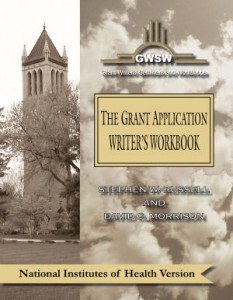The NIH adopted MAJOR changes in grant applications beginning on January 25, 2016. These changes can be expected to have a profound impact on how applicants write their proposals (and how reviewers will review these proposals in the future). These changes have been prompted by the conclusion of NIH administrators that NIH-supported, and peer-reviewed, published research findings have been found frequently not to be reproducible. These collective concerns of NIH have been recently summarized in NOT-OD-15-103 and are specifically designed to reduce the frequency of such problems through modification of guidelines for NIH grant applicants. Basically, the four key areas that will need to be addressed by applicants will include: 1) the underlying research findings to date that provide the scientific premise of the proposed research; 2) significantly increased attention to rigorous experimental design of experimental protocols; 3) careful consideration of sex and other relevant biological variables that could have an important impact on any research conclusions reached; and 4) documented authentication of any key biological reagents and chemicals to be used in the proposed research. For detail, see http://www.nih.gov/research-training/rigor-reproducibility/updated-application-instructions-enhance-rigor-reproducibility and http://grants.nih.gov/reproducibility/index.htm.
To implement these changes in an expedited fashion, NIH has adopted a two-phase approach. Phase 1 recently became effective as of January 25, 2016 and will be used until May 24, 2016. During this interim period, applicants will continue to use FORMS-C in the SF 424 (R&R related). However, considerably more attention will be paid by reviewers to an applicant’s attention to scientific rigor, which will require greater focus by applicants to the preparation of the Research Strategy (this will primarily affect the way that the Significance and Approach sections of the proposal are written). Further, applicants are now required to include both sexes (human subjects and experimental animals) unless strong justification can be provided for inclusion of only one sex. Applicants are also now required to include a new attachment: “Authentication of Key Biological and/or Chemical Resources” (Not part of the 6- or 12-page limit for the Research Plan). Applicants are also now required to provide details of the validity of such things as cell lines, transgenic mice, key reagents, monoclonal/polyclonal antibodies, and the like that will need to be documented and/or authenticated. Finally, reviewers of NIH grant applications will be provided with specific instructions as to what to look for in terms of rigor and transparency. Similarly, reviewers will be provided by NIH with information that will allow them to fulfill their responsibilities.
On May 25, 2015, Phase 1 interim changes will be solidified and finalized by inclusion of additional instructions for applicants and reviewers. A new FORMS-D Application Guide, currently under preparation at the NIH, will have been issued. All current Funding Opportunity Announcements will be reissued to include the new review considerations prior to May 25, 2016. A new policy regarding appendices will have been formulated and released by the Spring of 2016. These new forms must be used for all applications submitted after May 25, 2016. Projected changes will include a new “Assignment Request” Form which will necessitate Cover Letter Attachment changes (NOT-OD-16-004). This latter change should facilitate the application being assigned to the Institute(s) or Center(s) as directed by the applicant, as well as assignment to the IRG (Initial Review Group). Finally,(and, we are certain, of considerable relief to applicants), the NIH has provided the opportunity for applicants to use a greater range of font choice (NOT-OD-16-009).
In a forthcoming Facebook post we will present a list of very specific action steps that NIH applicants can use to ensure they will be maximally compatible with these NIH changes. Opportunities will be provided for readers to obtain, free of charge, a copy of a Supplement for The Grant Application Writer’s Workbook (May 2015 NIH Version) prepared by GWSW staff. This Supplement to The Grant Application Writer’s Workbook (NIH Version) will be available until the revised and updated edition of the NIH Version Workbook is available, expected to be in late April, 2016. The Supplement provides details of specific suggestions on how to prepare the Significance and Approach subsections in order to be fully compatible with the new NIH guidelines.

